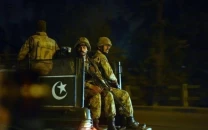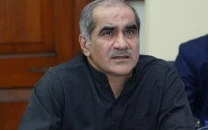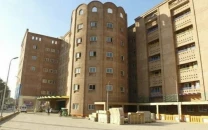Decent housing: In Islamabad, an umbrella is the only affordable shelter
Capital’s housing shortage continues to widen, low-income groups <br /> worst hit, no change in sight.

While new citizens continue to pour into the capital, city managers seem to have fled to high ground and left common citizens to drown.
The gap between demand and supply of housing units in Islamabad has been increasing with every passing year, creating a severe bubble in housing prices and land values.
Meanwhile, the Capital Development Authority (CDA) has miserably failed to address the housing needs of lower and middle segments of the city’s population.
Unofficial figures based on a 2011 Census Department housing survey and recently-released details of units provided by the CDA and private developers suggested that there is a shortfall of nearly 90,000 housing units.
According to the 1998 census, Islamabad’s population was 800,000. This has since risen to over two million, according to recent estimates, largely due to migration from violence-stricken Khyber-Pakhtunkhwa.
According to CDA estimates, since its establishment the authority has provided only 50,000 housing units. The authority also estimates that private land developers added 80,000 housing units in the last 10 years.
Similarly another 70,000 housing units have been added in unplanned areas such as Bhara Kahu, Tarnol, Golra, Bani Gala and sectors H-13, H-11, F-12, G-11 and I-11.
The CDA planning wing says each housing unit is estimated to accommodate seven individuals.
Using this base estimate, the CDA planning wing puts the housing shortage at 90,000 units.
An official of the authority says the situation is resulting in building violations and development of illegal and unplanned settlements in the city.
Single housing units initially meant for the construction of single storey buildings have now been converted into three-storey houses. Such houses can easily be seen in sectors I-9, I-10, G-9, G-10 and some of the sub-sectors in the F-series.
Illegal settlements
The authority has also continuously ignored the need for affordable housing for low-income citizens. These include the CDA’s own low-cadre employees, especially sanitation wing staff, many of whom belong to religious minorities.
The CDA labour union says the body employs over 3,000 Christians. “Almost all of them are serving in basic pay scales one through five,” said Shahzad Anjum, a CDA employee who is also spokesperson of the Christian Youth Public Forum.
He said almost 70 per cent of the Christian staffers live in katchi abadis, while a handful have been given residential quarters by the authority.
Anjum said the starting monthly pay for a sanitation worker was a little over Rs12,000. He said it is not economically feasible for anyone to rent respectable accommodation in the city in that amount. He called upon the authority to initiate affordable housing projects to at least its own employees.
A recent Interior Ministry survey said that 80,000 people in Islamabad from low-income groups are living in 23 slums where most basic services including drinking water, sanitation and waste disposal are missing. The slums are also expanding.
Lawyer Haseeb Shakoor Paracha says the CDA’s lackadaisical response to the housing shortage violates Article 25 of the Universal Declaration of Human Rights 1948, which guarantees everyone a basic standard of living.
He said there are comprehensive federal government policies to effectively deal with the issue of katchi abadis, but implementation of these policies remains a distinct dream. He felt that until the provision of affordable housing, the situation would continue to worsen and leave slum dwellers open to exploitation.
Published in The Express Tribune, November 13th, 2014.



















COMMENTS
Comments are moderated and generally will be posted if they are on-topic and not abusive.
For more information, please see our Comments FAQ